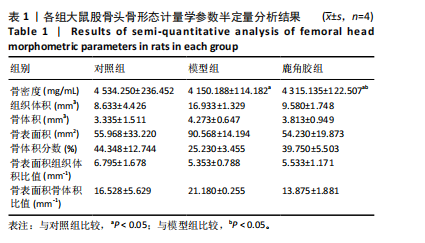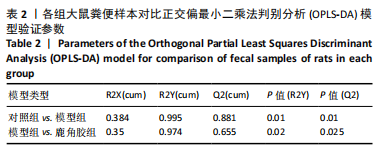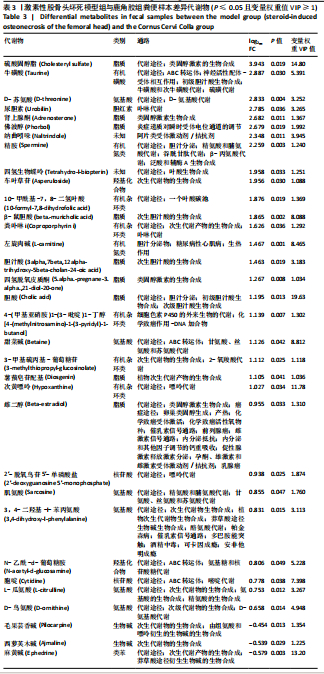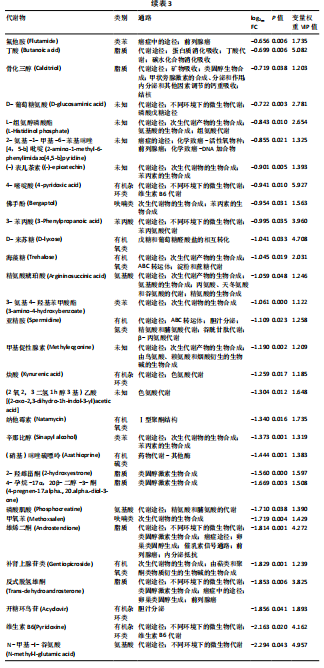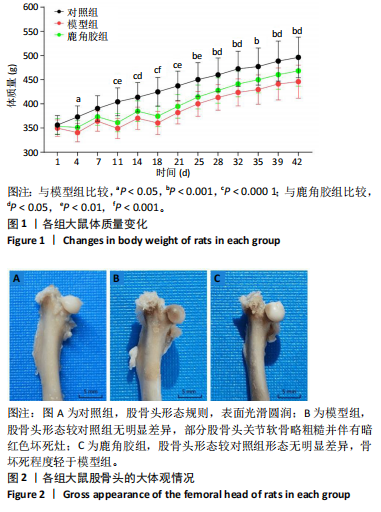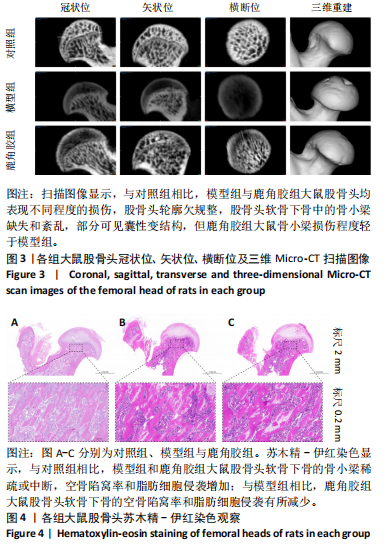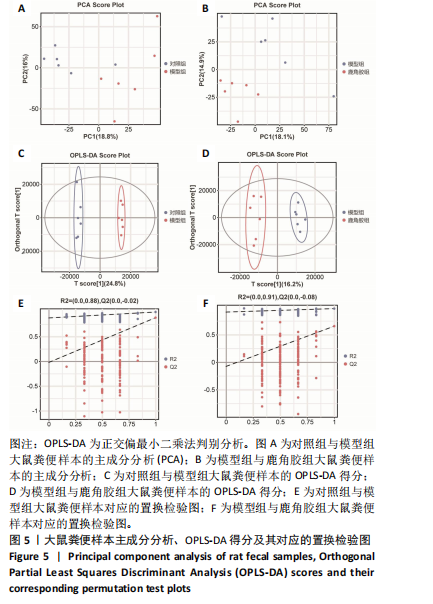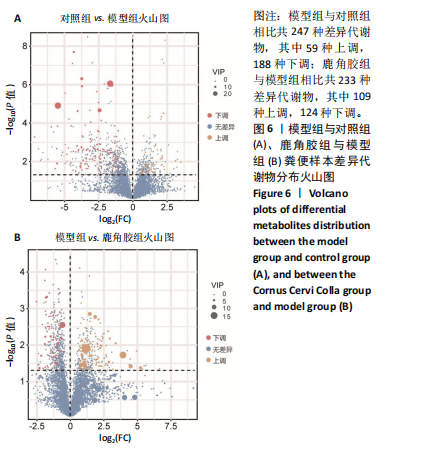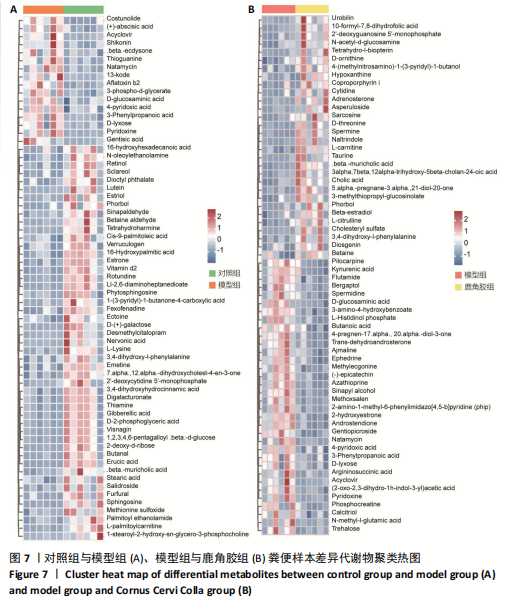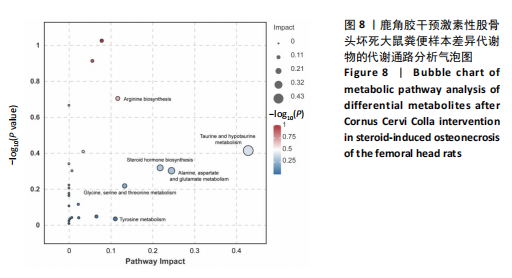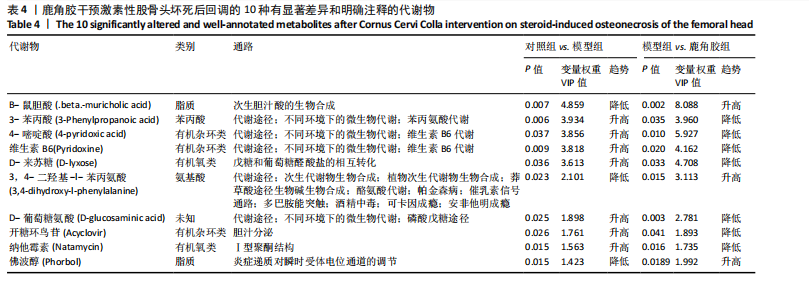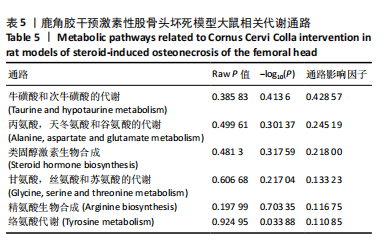[1] CHEN K, LIU Y, HE J, et al. Steroid-induced osteonecrosis of the femoral head reveals enhanced reactive oxygen species and hyperactive osteoclasts. Int J Biol Sci. 2020;16(11):1888-1900.
[2] HUANG C, WEN Z, NIU J, et al. Steroid-Induced Osteonecrosis of the Femoral Head: Novel Insight Into the Roles of Bone Endothelial Cells in Pathogenesis and Treatment. Front Cell Dev Biol. 2021;9:777697.
[3] WANG Y, LI D, CHEN H, et al. Accumulation of Fat Not Responsible for Femoral Head Necrosis, Revealed by Single-Cell RNA Sequencing: A Preliminary Study. Biomolecules. 2023;13(1):171.
[4] CHANG C, GREENSPAN A, GERSHWIN ME. The pathogenesis, diagnosis and clinical manifestations of steroid-induced osteonecrosis. J Autoimmun. 2020;110:102460.
[5] ZHANG X, YANG Z, XU Q, et al. Dexamethasone Induced Osteocyte Apoptosis in Steroid-Induced Femoral Head Osteonecrosis through ROS-Mediated Oxidative Stress. Orthop Surg. 2024;16(3):733-744.
[6] WANG A, REN M, WANG J. The pathogenesis of steroid-induced osteonecrosis of the femoral head: A systematic review of the literature. Gene. 2018;671:103-109.
[7] FANG S, HE T, YOU M, et al. Glucocorticoids promote steroid-induced osteonecrosis of the femoral head by down-regulating serum alpha-2-macroglobulin to induce oxidative stress and facilitate SIRT2-mediated BMP2 deacetylation. Free Radic Biol Med. 2024;213:208-221.
[8] 孙铁锋,王平.鹿角胶-壳聚糖细胞支架修复大鼠股骨头缺血性坏死[J].中成药,2015,37(11):2337-2341.
[9] TAO SC, YUAN T, RUI BY, et al. Exosomes derived from human platelet-rich plasma prevent apoptosis induced by glucocorticoid-associated endoplasmic reticulum stress in rat osteonecrosis of the femoral head via the Akt/Bad/Bcl-2 signal pathway. Theranostics. 2017;7(3):733-750.
[10] 武瑞骐,崔伟,杨启培,等.激素性股骨头坏死的中医药治疗机制[J].中国组织工程研究,2023,27(17):2763-2771.
[11] 郭雪峰,任艳玲,于睿,等.基于“久病入络”理论探讨“从虚而始,因虚致瘀,瘀痹骨络”的激素性股骨头坏死核心病机观[J].中华中医药学刊,2024,42(6):191-194.
[12] 黄为,刘琴,韦宗波,等.激素性股骨头坏死研究现状及趋势可视化分析[J].世界中西医结合杂志,2023,18(2):225-235+243.
[13] 张绵钰,韩杰,曾浩,等.中药调控成骨细胞铁死亡治疗激素性股骨头坏死[J].中国组织工程研究,2025,29(1):185-192.
[14] 孙昭杰,张宁,李明阳,等.激素性股骨头坏死的中西医治疗进展[J].中医药学报,2023,51(6):105-109.
[15] 郭雪峰,于睿,任艳玲,等.基于“成骨-成血管耦联”理论探讨中医药防治激素性股骨头坏死的科学内涵[J].中华中医药学刊, 2024,42(7):56-60.
[16] 杨小瑞,曹林忠,胡康一,等.细胞焦亡在骨代谢异常疾病中的研究[J].中国骨质疏松杂志,2024,30(1):124-128.
[17] 汪亮,刘耀升,刘蜀彬.糖皮质激素诱导股骨头坏死发病机制的研究进展[J].中华损伤与修复杂志(电子版),2015,10(5):439-445.
[18] SUN K, XUE Y, ZHANG X, et al. Tanshinone I alleviates steroid-induced osteonecrosis of femoral heads and promotes angiogenesis: in vivo and in vitro studies. J Orthop Surg Res. 2023;18(1):474.
[19] ZHAO P, ZHAO S, ZHANG J, et al. Molecular Imaging of Steroid-Induced Osteonecrosis of the Femoral Head through iRGD-Targeted Microbubbles. Pharmaceutics. 2022;14(9):1898.
[20] NAN K, PEI JP, FAN LH, et al. Resveratrol prevents steroid-induced osteonecrosis of the femoral head via miR-146a modulation. Ann N Y Acad Sci. 2021;1503(1):23-37.
[21] WANG F, MIN H S, SHAN H, et al. IL-34 Aggravates Steroid-Induced Osteonecrosis of the Femoral Head via Promoting Osteoclast Differentiation. Immune Netw. 2022;22(3):e25.
[22] PHAN V, BLYDT-HANSEN T, FEBER J, et al. Skeletal findings in the first 12 months following initiation of glucocorticoid therapy for pediatric nephrotic syndrome. Osteoporos Int. 2014;25(2):627-637.
[23] 胡亚楠,杜海涛,于洋,等.鹿角胶体内分布及入血入骨成分的示踪动力学分析[J].中国组织工程研究,2024,28(28):4441-4446.
[24] 胡亚楠,王平,杜海涛,等.血清蛋白质组学技术发现鹿角胶治疗维甲酸致股骨头坏死模型大鼠的机制[J].中国组织工程研究, 2022,26(14):2243-2251.
[25] 王平,张会敏,李刚.鹿角多肽对骨髓间充质干细胞的影响[J].中华中医药杂志,2018,33(12):5644-5647.
[26] 李纪书,郭成龙,任行全,等.激素性股骨头坏死相关信号通路及发病机制研究概述[J].现代中医药,2024,44(1):5-10.
[27] 梁学振,杨曦,李嘉程,等.补肾活血胶囊对激素性股骨头坏死大鼠骨修复和脂肪形成的影响[J].中华中医药杂志,2022,37(3): 1763-1768.
[28] 汤朔,侯德才.股骨头坏死动物模型构建:如何更接近临床应用[J].中国组织工程研究,2021,25(29):4691-4696.
[29] 石包圣,闫国珍,李爱华,等.早期激素性股骨头坏死动物模型制备的实验研究[J].包头医学院学报, 2021,37(5):109-112.
[30] 李瑞琦,张国平,李宜炯,等.激素性股骨头坏死模型:不同构建技术分析[J].中国组织工程研究,2013,17(37):6676-6681.
[31] 汪轩,张琳,邢婧,等.激素剂量对激素性股骨头坏死模型建立的影响及系统评价[J].浙江中医药大学学报,2016,40(1):19-25.
[32] 佟鹏,王洋,梁瀛.激素性股骨头缺血性坏死动物模型的建立及综合评估[J].中国组织工程研究,2018,22(32):5169-5174.
[33] 周磊,翁习生.激素性股骨头坏死动物模型的选择与应用[J].中国矫形外科杂志,2013,21(21):2155-2158.
[34] 王岩,马剑雄,董本超,等.激素性股骨头坏死动物模型的研究进展[J].生物医学工程与临床,2021,25(5):650-656.
[35] HADJIGEORGIOU G, DARDIOTIS E, DARDIOTI M, et al. Genetic association studies in osteonecrosis of the femoral head: mini review of the literature. Skeletal Radiol. 2008;37(1):1-7.
[36] ZHANG YW, SONG PR, WANG SC, et al. Diets intervene osteoporosis via gut-bone axis. Gut Microbes. 2024;16(1):2295432.
[37] 王博,景少博,徐世红,等.微生物、肠脑轴在骨质疏松症中的作用及中药干预研究进展[J].实用中医内科杂志,2024,38(4):40-43+150.
[38] KAZEMIAN N, MAHMOUDI M, HALPERIN F, et al. Gut microbiota and cardiovascular disease: opportunities and challenges. Microbiome. 2020;8(1):36.
[39] HEINKEN A, RAVCHEEV DA, BALDINI F, et al. Systematic assessment of secondary bile acid metabolism in gut microbes reveals distinct metabolic capabilities in inflammatory bowel disease. Microbiome. 2019;7(1):75.
[40] ASANO K, SUZUKI T, SAITO A, et al. Metabolic and chemical regulation of tRNA modification associated with taurine deficiency and human disease. Nucleic Acids Res. 2018;46(4):1565-1583.
[41] PéREZ-HERNÁNDEZ E, PASTRANA-CARBALLO JJ, GóMEZ-CHáVEZ F, et al. A Key Metabolic Regulator of Bone and Cartilage Health. Endocrinol Metab (Seoul). 2022;37(4):559-574.
[42] HIRATA H, UEDA S, ICHISEKI T, et al. Taurine Inhibits Glucocorticoid-Induced Bone Mitochondrial Injury, Preventing Osteonecrosis in Rabbits and Cultured Osteocytes. Int J Mol Sci. 2020;21(18):6892. |
